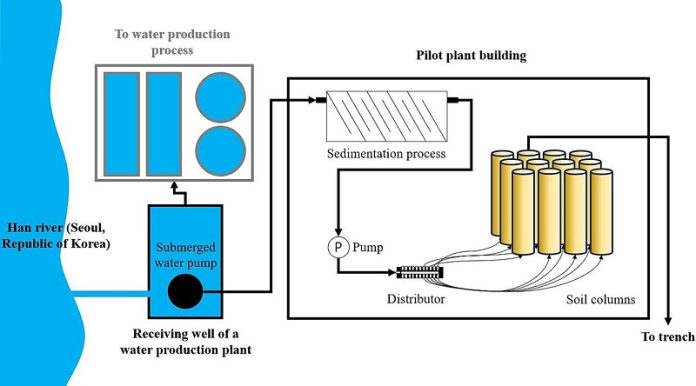
As climate change continues to cause extreme floods and droughts around the world, finding reliable ways to store and supply water has become more important than ever.
Countries like the United States, the Netherlands, and Australia have started using aquifer storage technology to help manage their water resources.
This technique is now gaining attention in South Korea, where intense summer rains and unpredictable weather make it difficult to ensure a steady water supply, especially in rural and island areas.
In response to these challenges, Dr. Seongpil Jeong and Kyungjin Cho from the Center for Water Cycle Research at the Korea Institute of Science and Technology (KIST) have developed a new method to improve the stability of aquifer storage systems.
Their findings, published in the Chemical Engineering Journal, offer a promising solution for long-term water storage.
Aquifer storage involves injecting surface water into underground layers of sand or rock (known as aquifers) to store it for later use.
However, this method can face problems if the water isn’t properly treated before being injected. Organic matter in the water, such as assimilable organic carbon, can feed microorganisms that cause pore clogging, which can reduce the efficiency of the storage system.
In previous research, the KIST team found that microorganisms could reduce the amount of organic carbon in artificial water under simulated conditions.
Building on this, their latest study tested the process using real river water instead of artificial water, closely simulating real-world conditions.
Over 13 months, the researchers injected river water into a sandy layer in the ground every two weeks, then withdrew it two weeks later to observe how the water and the soil changed.
Despite seasonal fluctuations in the river water, the study showed that the concentration of organic matter in both the soil and the stored water remained stable.
This was achieved using a simple physical sedimentation process without the need for chemical treatments, and no pore clogging occurred throughout the year.
To understand why water quality remained stable, the researchers studied the changes in the microbiome—the community of microorganisms in the aquifer.
They discovered that the microbiome adapted to the seasonal changes in the river water, effectively reducing the organic matter and preventing pore clogging. This adaptation was key to maintaining the stability of the water stored in the aquifer.
The techniques used in this study could be applied to test other aquifer storage sites, helping to develop better pretreatment processes for incoming water.
The researchers believe that ongoing analysis of organic matter and microorganisms will be crucial for the stable operation of these systems in the future.
“This research contributes to the stable operation of aquifer storage technology, which is becoming an essential tool for addressing water supply challenges,” said Dr. Jeong and Dr. Cho.
“Our study of long-term changes in organic matter and the microbiome in a pilot-scale aquifer system is the first of its kind globally and has great potential for future applications.”
This breakthrough offers hope for more reliable and efficient water storage systems, particularly as the world continues to face the impacts of climate change.



